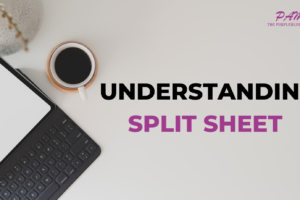
Turn Your Performances Into Money – Let’s Talk about SetList
It is not uncommon to hear songwriters and artistes complain that their songs were performed in live music venues and that they were never paid for those performances. It is also not uncommon to see how much revenue the songwriters lose anytime their songs are performed and the songs are not captured and paid for. It is equally not uncommon to see the performer or the artiste being paid money for their appearance on stage and the songwriters left high and dry.
As a songwriter or an artiste who writes his or her songs, you stand a good chance of being paid whenever your song(s) is(are) performed in live music venues like concert and festival venues, gigs and clubs, international concerts, award events, comedy shows and so on. It does not really matter how big or small the gig is, you still stand a chance of earning income from such public performance of your song(s).
Whenever your song is performed by an artiste or by yourself, the law allows you and/or the publisher of the song, to earn what is commonly referred to as public performance royalties in the music business. We will discuss this type of royalty as part of a songwriter’s or publisher’ source of income in a subsequent article.
As a songwriter or an artiste, in order not to miss out from this type of royalty, it is always advisable to create a setlist of the songs you intend to perform or you have performed and submit same to your local CMO, as this is one of your keys to earning an income.
A setlist is a handwritten or printed document that is created as an outline for a performance that lists the order of songs, that an artiste intends to perform, or has performed, during a specific performance or show. A setlist that is well outlined can mean the difference between earning an income and losing same.
Once a setlist has been created, it can be used again and again to inform the CMO of your performances probably at different live music venues or at different dates. You can always add songs to the setlist and remove songs from the setlist depending on the songs performed at each separate venue.
So, in creating a setlist and depending on the requirements of the CMO, you would need to provide the following information:
• The name of the performer and composer of the song.
• The name of the venue where the performance took place.
• The address of the venue.
• The date and time of the show or performance.
• The list of songs or tracks performed.
It is important to note that you can always submit your setlist before or after the performance or show with the CMO of the territory or country where your performance or show took place, and as a backup, you can also submit another copy to your home CMO. Some CMOs have portals within the artiste accounts where such information can be filled digitally but whatever the case, you will be required to provide the above information.
The lack of submission of a setlist by performers or artistes that perform in foreign countries is one of the reasons, they lose this important type of royalty, which could actually be substantial if you play a lot of gigs in these territories, and if you are also the songwriter, apart from your appearance fee, you can also get paid as a songwriter – that is double portion income.
For many CMOs, there is a time limit within which you can submit your setlist. For some, it is six months after the performance had taken place whilst for others, it could be one year, two years or even three years. This is where the artiste managers come in, to ensure that their clients’ setlist is submitted within this time limit and in the proper manner.
So, if you are a songwriter or artiste, stop leaving your money on the table. Get your setlist into the right hands and see your income grow.
Thank you and keep well and stay safe
CHINEDU CHUKWUJI, PhD
Chinedu Chukwuji is a Copyright and Music Business Expert, Lead Consultant at PurpleBlue Entertainment Solutions and founder of PurpleBlue Academy of Music Business



